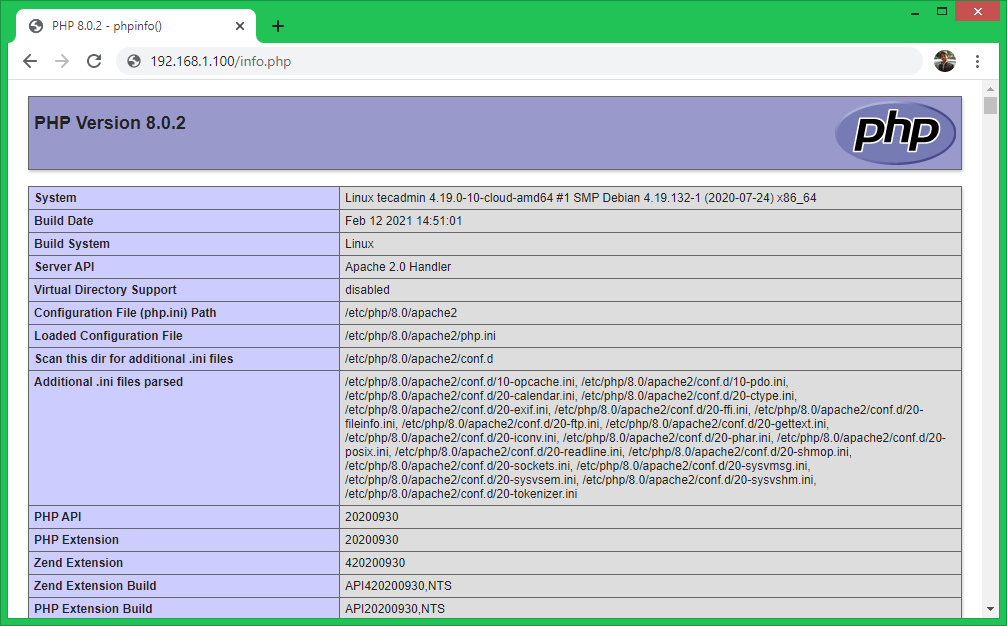PHP is a scripting language, and a powerful tool for developing dynamic and interactive Web pages. It was originally created in 1994 by Danish-Canadian programmer Rasmus Lerdorf. According to W3Techs’ data, PHP is used by 78.9% websites running in public network. So almost 8 out of every 10 websites on the Internet are using PHP in some way.
PHP 8.0 is the latest available version for the web development. It is the most advanced and secure version released by the PHP Team.
This tutorial will help you to install PHP 8.0 on Debain 10 Buster Linux system.
Step 1 – Setup Apt Repository
Ondrej Sury is maintaining the PPA that contains the latest PHP packages for the Debian systems.
- Let’s start with the installation of some required packages on your system. Open a terminal and execute following commands:
sudo apt updatesudo apt install -y gnupg2 ca-certificates apt-transport-https software-properties-common - Next, add the GPG key to your system to verify the packages before installation.
wget -qO - https://packages.sury.org/php/apt.gpg | sudo apt-key add - - Create a PPA file to your system with php repository on your buster Linux system.
echo "deb https://packages.sury.org/php/ buster main" | sudo tee /etc/apt/sources.list.d/php.list
Step 2 – Installing PHP 8 on Debian
Your system is ready for the PHP installation. Use following commands to install PHP 8 on Debian system.
sudo apt updatesudo apt install php8.0
Fist command will update the apt cache on your system and second command will install PHP packages.
Once the installation finished, verify the PHP version on terminal.
php -v
PHP 8.0.2 (cli) (built: Feb 12 2021 14:51:01) ( NTS )
Copyright (c) The PHP Group
Zend Engine v4.0.2, Copyright (c) Zend Technologies
with Zend OPcache v8.0.2, Copyright (c), by Zend Technologies
Step 3 – Installing PHP Extensions
PHP comes with multiple extensions (also known as modules) to preform specific tasks. You can install these extensions on your system as per your requirements.
First, search for available modules in repository:
sudo apt search php8.0-*
Then install required php modules on your system. The following command will install some frequently used PHP modules on your system.
sudo apt install php8.0-{mysql,imap,ldap,xml,curl,mbstring,zip}
You can check for currently installed and active PHP modules on your system by running following command.
php -m
You can visit another article about enable or disable PHP modules on a Debian system systems.
Step 4 – Setup Apache with PHP 8
Generally the above commands also install Apache PHP extension on your system. But incase not installed, execute below command to install Apache with PHP 8 module.
sudo apt install apache2 libapache2-mod-php8.0
After successful installation, restart Apache service to reload newly installed modules.
sudo systemctl restart apache2
Next, verify thta PHP modules is loaded with Apache. Create a php script with phpinfo() function under the default document root.
echo "<?php phpinfo(); ?>" > /var/www/html/info.php
Access this file in browser using server ip address. For example: http://server-ip/info.php
You will see the detailed PHP information on the web page.
Conclusion
This tutorial helped you to install PHP 8.0 on Debian 10 system.


